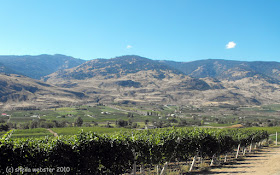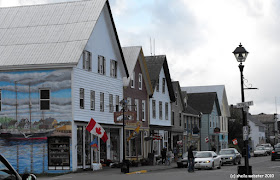Osoyoos, BC, Canada was originally called ‘Souyoos’ which translates as “the narrow waterway where the land almost meets” and is the southern most town of the Okanagan Valley, just 2 km (1.2 mi) north of the US border.
Excavations in Osoyoos show that the aboriginal people have lived here for thousands of years, harvesting the resources of the land. This was a hard working culture that sustained the Okanagan people for thousands of years. From that has come a very progressive and successful band under today’s leadership of Chief Clarence Louie.
Metal scuptures at Spirit Ridge, Osoyoos, BC
Chief Clarence Louie and Virgil Smoker Marchand have designed and produced several pieces of art over the years that are scattered about the Okanagan Valley
The Unity Rider in Osoyoos, BC
The Unity Rider carries the nine feathers that represent the nine known Indian bands of the 1880’s. The Unity symbolism originated as part of the modern North American Aboriginal Unity Ride ceremony.
NK'Mip RV park on Osoyoos Lake, BC
The entrance to the NK’Mip RV park has a story to tell with the sculpture of the native fishing for his food. It is a welcome to the park and a tribute to the forefathers of the Osoyoos band.
The Chief ~ NK'Mip Desert Cultural Centre
The Chief greets all those who visit the NK’Mip Desert Cultural Center with his peace pipe offering in hand. This was another piece of artwork by Smoker Marchand commissioned by Chief Louis. The Cultural Center

Spirit Ridge Vineyard Resorts in Osoyoos, BC
The NK’Mip Resort, pronounced ink-a-meep and meaning bottomland, offers this work of art as you drive through the Spirit Ridge Vineyard Resort & Spa. Other sculptures are displayed throughout the area that I hope to see before I leave this area.
Another display of art would be a fountain in the summertime but my visit was late in the season so the horse stood in the center of the dry pond. This was in the courtyard of the Villas and suites of the resort.
The most recent of the artwork that I have seen are these two figures at the entrance of a new development north of Oliver. The Senkulmen Enterprise Park
Senkulmen Enterprise Park, Oliver, BC
I find these pieces of art absolutely fascinating and hope to find more. The works of Smoker Marchand along with the design of Chief Clarence Louie make a very impressive combination and unique to the area. If you wish to learn more about the Chief and the Osoyoos Indian Band and its development corporation, clik here and you will learn more on their impressive business growth over the years.























































